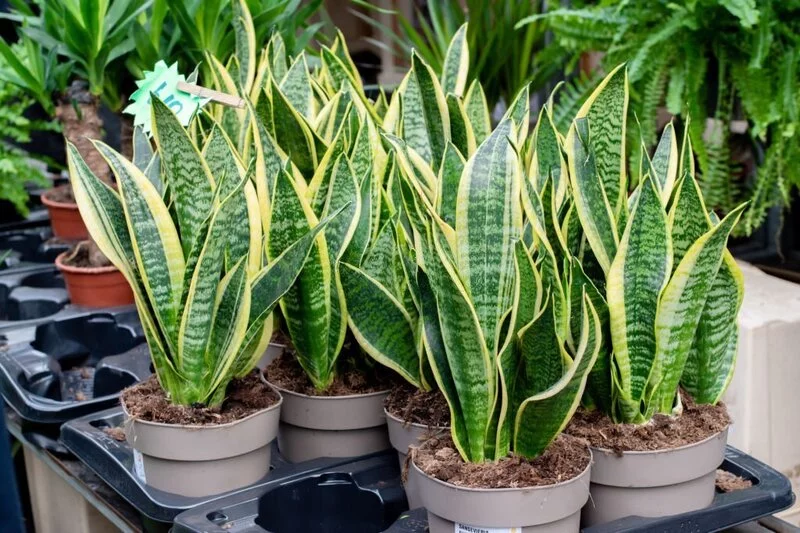Are you a proud owner of a snake plant, but lately, it’s been looking a little under the weather? Not to worry! Snake plants are renowned for their toughness, and with the right care, they can bounce back to their glorious, vibrant selves. This article is your go-to guide to understand why your snake plant may be struggling and how to nurse it back to health.
Snake Plant and Its Needs
Snake plants, also known as Sansevieria or Mother-in-law’s Tongue, are popular houseplants due to their striking appearance and low-maintenance nature. They are native to West Africa’s tropical forests, but they can thrive in a range of indoor conditions, making them a favorite choice for homes and offices.
Snake plants have long, upright leaves that can grow quite tall, depending on the variety. These leaves are thick, succulent, and often boast beautiful patterns. This plant’s unique look can brighten any corner, and it’s also known for its air-purifying qualities. It can filter indoor air and remove toxins, contributing to a healthier environment.
Understanding your snake plant’s needs is the first step to reviving it. These resilient plants enjoy bright, indirect light, but they can also tolerate lower light conditions. They prefer well-draining soil and pots with drainage holes, as they do not like their roots staying wet for long periods. Overwatering is a common mistake that can lead to problems like root rot. On the other hand, they can handle being a little on the dry side, making them an excellent choice for forgetful waterers!
Identifying Problems in Your Snake Plant
Uh-oh, your snake plant is looking sad, and you’re not sure why? Don’t worry, we’re here to help. The first thing to remember is that plants, like people, show signs when they are not feeling well. It could be yellow leaves, brown tips, wilting, or even leaves falling off. Each symptom can point towards a different issue, so it’s like being a plant detective!
For snake plants, some of the common problems include overwatering, low light, pests, and cold shock. The key is to observe your plant closely, and don’t ignore the warning signs. Are the leaves turning yellow from the bottom? It might be overwatering. Are the leaves drooping and looking a bit too ‘mushy’? That could be a sign of root rot. Are there tiny spots or web-like structures on the plant? You might have a pest problem.
Overwatering and Root Rot in Snake Plants
We get it, you love your snake plant, and you want to shower it with care, which often means watering it regularly. But guess what? When it comes to snake plants, less is more! Overwatering is the quickest way to make your snake plant unhappy.
Snake plants are succulents, and they store water in their thick leaves. This means they can go for a while without needing another drink. If they sit in waterlogged soil for too long, their roots can start to rot, which can eventually kill the plant. Signs of overwatered snake plants include yellowing leaves, especially at the base of the plant, and a mushy or soft feeling when you touch them.
If you suspect overwatering, the first thing you should do is check the roots. Carefully take your snake plant out of its pot and examine the root system. Healthy roots should be firm and white. If they are brown, mushy, or have a bad smell, your plant might be suffering from root rot.
Don’t panic, though! Root rot might sound scary, but with a little effort, your snake plant can still bounce back. In the next sections, we’ll discuss how to treat root rot and other ways to revive your snake plant.
Underwatering and Drought Stress in Snake Plants
Now, while snake plants don’t need a lot of water, they can’t survive with none at all. Underwatering, or drought stress, is another issue that might be causing your snake plant to feel under the weather.
Underwatered snake plants usually display signs such as wrinkled or curled leaves, browning at the tips and edges, and a general loss of vigor. You might think that these tough plants can handle a little neglect, and while they’re more tolerant than most, they still need your care to thrive.
So, how often should you water your snake plant? It depends on a few factors, like the size of the plant, the size of the pot, the temperature, and the humidity level. But as a general rule, watering once every 2-3 weeks is usually enough. Make sure to check the top inch of soil and only water if it’s dry.
Inadequate Light and Temperature Conditions
Just like us, plants need light to live and grow. And when it comes to snake plants, they’re pretty flexible. They can tolerate low light conditions, but they prefer bright, indirect light. If your snake plant isn’t getting enough light, it might start to ‘stretch’ towards the light source, becoming leggy and weak.
On the other hand, too much direct sunlight can be harmful too. Snake plants can get sunburned, which shows up as brown, crispy spots on the leaves. To avoid this, place your snake plant in a spot where it will get plenty of indirect light.
Temperature is another important factor. Snake plants prefer warm conditions, ideally between 70-90°F (21-32°C). They can tolerate cooler temperatures down to about 50°F (10°C), but anything below that, especially for a prolonged period, can cause damage.
If you’re keeping your snake plant outdoors, remember to bring it in before the first frost. And if you’re keeping it indoors, avoid placing it near drafty windows or doors, especially during the winter.
Steps to Revive Your Snake Plant
Don’t lose hope if your snake plant seems down in the dumps – it’s not called the ‘indestructible plant’ for nothing! Here are a few steps you can take to nurse your plant back to health.
First, identify the problem. Is it overwatered, underwatered, or does it just need more light? Once you know the cause, you can start the healing process.
If your snake plant is suffering from overwatering or root rot, remove it from the soil and cut off any mushy, discolored roots. Allow the plant to dry out for a day or two, then repot it in fresh, well-draining soil.
For underwatered plants, simply give it a good soak. Water thoroughly until water drains out of the bottom of the pot, then let it dry out before the next watering.
If your plant needs more light, find a brighter spot for it, but remember to avoid direct sunlight to prevent sunburn. And if it’s too cold, move your plant to a warmer spot, away from drafts.
Preventative Measures for Future Snake Plant Health
Now that your snake plant is on the mend, how do you keep it happy and healthy in the future? Here are some preventative measures you can take:
- Water properly: Remember, it’s better to underwater than overwater your snake plant. Always check the soil before watering and allow it to dry out between waterings.
- Provide adequate light: A spot with bright, indirect light is ideal. If you notice your plant becoming leggy or pale, it may need more light.
- Keep it warm: Avoid cold drafts and remember to bring your plant indoors before the first frost if it’s outside.
- Monitor for pests: Although snake plants are not typically bothered by pests, keep an eye out for common houseplant pests like spider mites and mealybugs.
Conclusion
Reviving a snake plant might seem like a daunting task, but with a little patience and care, your plant can bounce back from the brink. Snake plants are resilient and forgiving – they don’t ask for much, but the care you provide goes a long way in ensuring they live a long and healthy life. Happy planting!




